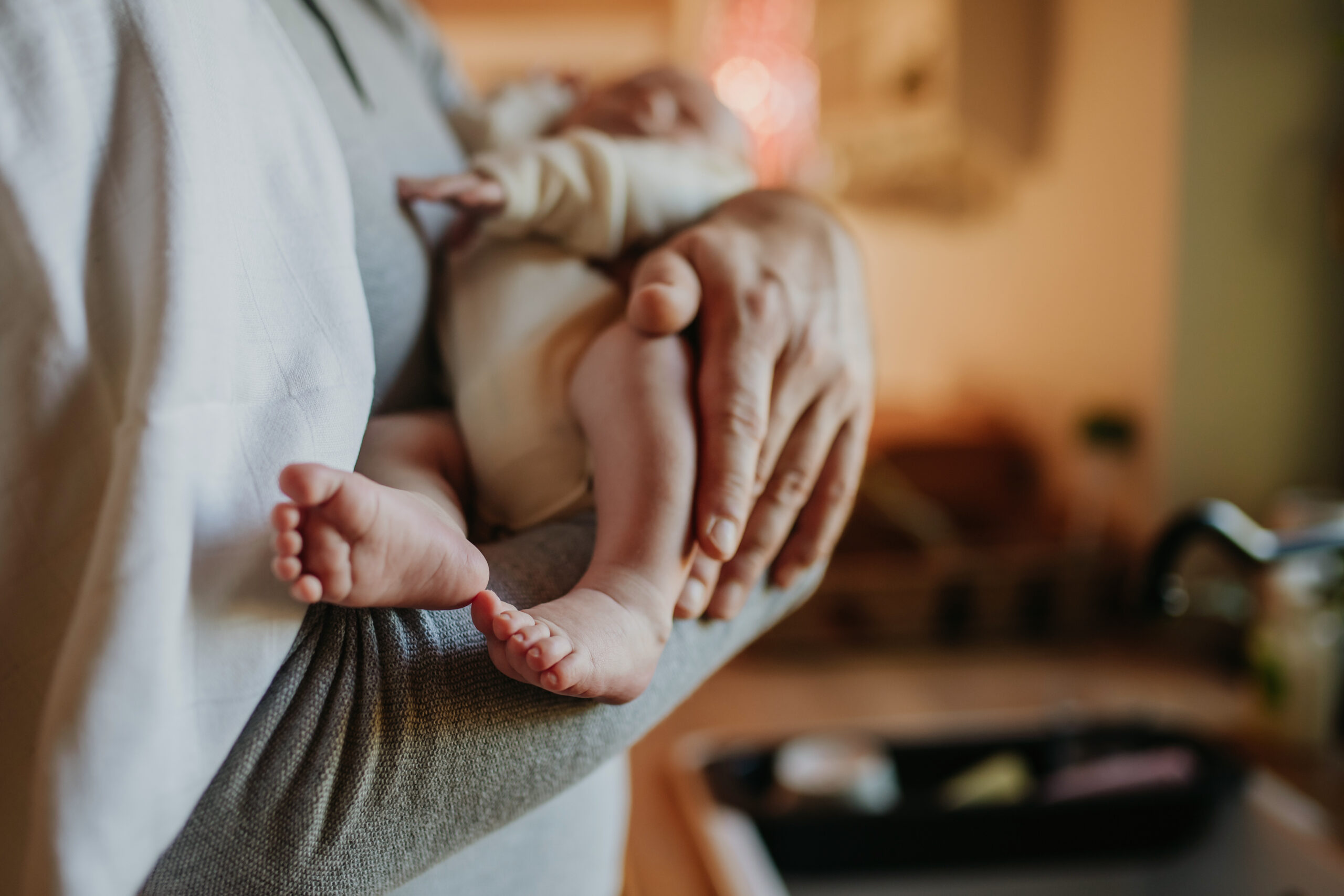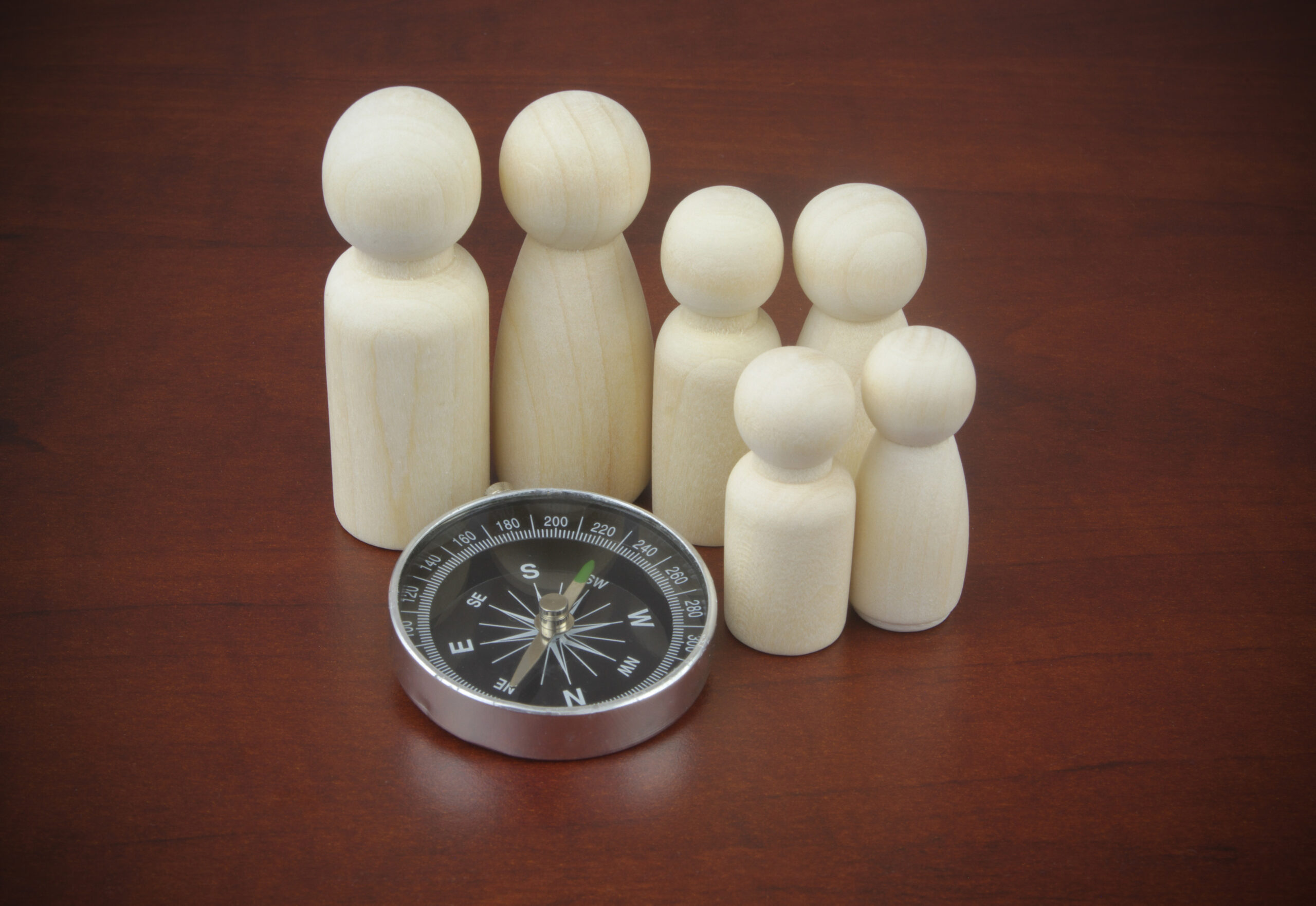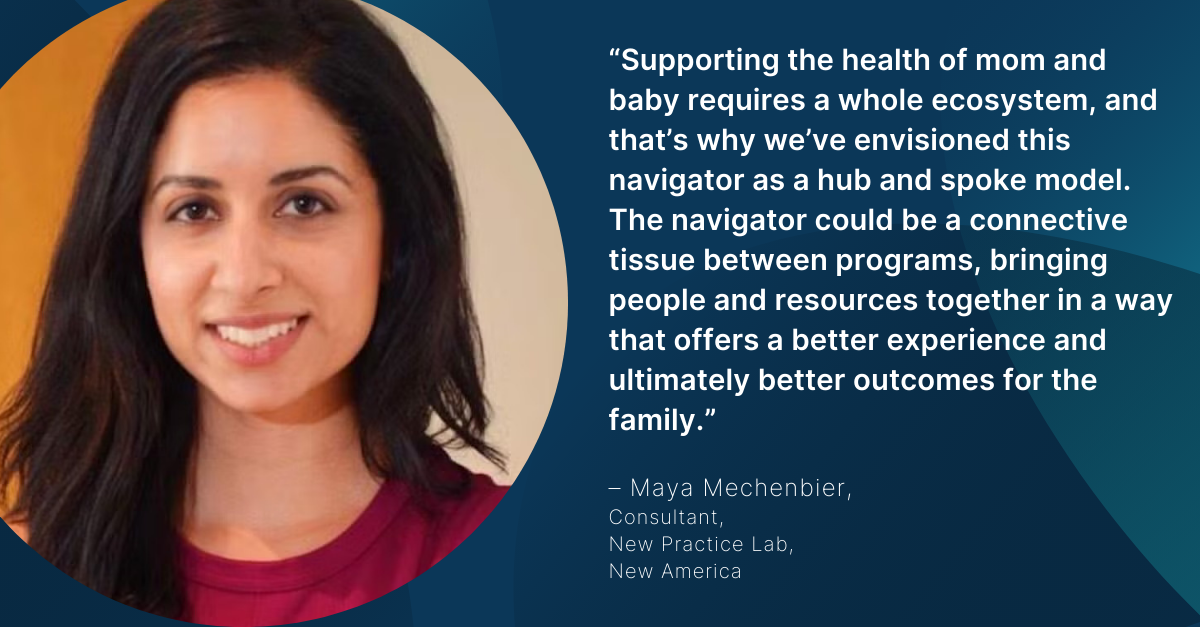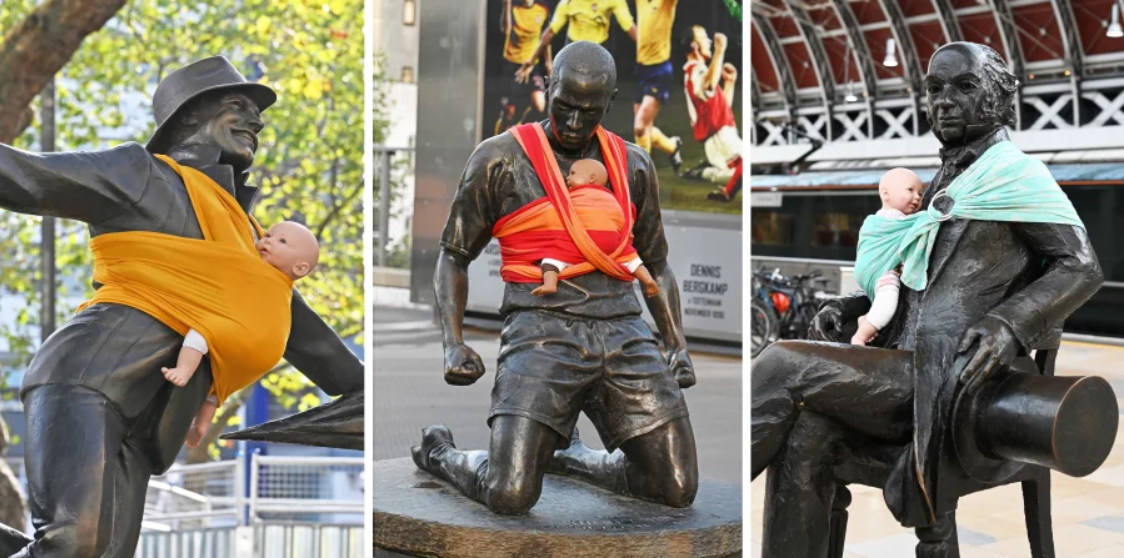👋 Especially in the earliest days, parenthood is a rollercoaster. There’s learning, bonding, worrying, feeding, changing — all while trying to grab a few precious hours of sleep.
During those early weeks with my newborn son, I had a moment of clarity: The health of a parent, especially a mother, is deeply connected to the support systems around her. I was fortunate to have 12 weeks of paid leave through my employer. But not everyone is so lucky — 1 in 4 women in the U.S. return to work within just 2 weeks of giving birth, often because they can’t afford to stay home longer.
Paid family leave isn’t just a workplace benefit — it’s a public health imperative.
At the Burke Foundation, we support policies and programs that strengthen the parent-child bond and create the conditions for healthy child development. Paid family leave is one of the most powerful tools we have. It reduces financial and emotional stress during the critical first months of life — when bonding and caregiving set the foundation for a child’s lifelong well-being — and helps with a parent’s recovery and resilience.
New Jersey has been a national leader in this space, becoming the second state to enact a paid family leave law in 2008. But too many families still fall through the cracks. Parents working for small businesses or in part-time roles may not qualify. And even among those who do, nearly half never use the benefit — deterred by lack of awareness or a confusing application process.
That’s why we’re devoting this issue of Starting Early to paid family leave: why it matters, and what needs to be done so more families get the help to which they’re entitled. Don’t miss our interview with Maya Mechenbier from New America who’s working to improve availability of leave for families.
Together, we can help all families have the time and support they need to start strong.
Atiya Weiss
Executive Director, the Burke Foundation
1 big thing: Family leave boosts maternal and infant health

The U.S. is the only high-income country without a national paid maternity leave benefit. It’s no coincidence that we also have the highest rate of pregnancy-related deaths among peer nations, according to a recent report from JAMA Network. The disparities are staggering. Black women are nearly 3 times more likely than white women to die during pregnancy or in the year after childbirth.
This is where paid family leave — offering more economic security and stability to a new family — can make a critical difference.
Research shows:
🍼 Breastfeeding increased by 9% in states with strong paid leave laws, and by 32% among Medicaid recipients with access to leave, a 2024 study found.
🧠 Postpartum depression symptoms were significantly less likely in states with paid family and medical leave.
💼 Paid prenatal disability leave was linked to lower rates of low birth weight and early-term birth.
💪 Paid leave also improves economic security, giving new parents time to recover, establish routines, and reduce stress during a vulnerable time.
📈 Employers benefit too — paid leave boosts job retention and reduces rehiring costs.
Family leave matters: Paid leave policies do more than support bonding. They support survival and long-term well-being.
2. Increasing paid leave use in New Jersey

The Problem: Paid leave doesn’t reach families who need it most
Nearly 1 in 4 women return to work within just 2 weeks of giving birth.
Only 13% of women in private sector jobs have access to any paid maternity leave.
Just 1 in 20 workers among the nation’s lowest 25% by income receive paid leave, compared to 1 in 5 in the top 10%.
And even when benefits are available, many families don’t use them — often due to confusing paperwork, language barriers, or misinformation from employers.
New Jersey, where thousands of eligible parents still aren’t tapping into paid leave, has taken strong steps to expand access — increasing the benefit to 12 weeks and up to 85% of wage replacement. But barriers remain, especially for families working in small businesses or navigating the system in a second language.
A new pilot to bridge the gap: To address these challenges, funders are exploring a partnership with New America and the New Jersey Department of Labor and Workforce Development for a promising innovation that uses community networks to help families make greater use of paid leave.
🧭 The pilot plans to use community navigators — experts trained in New Jersey’s family leave system — to help families understand their eligibility and available leave options and complete their applications.
Additionally, community navigators can connect families with such trusted providers as doulas, home visitors, and social workers.
The goal: Reduce stress, improve uptake, and help paid family leave deliver on its promise — especially for families who need it most. Look for updates, insights, and ways to get involved as the pilot moves forward. Stay tuned!
3. Maya Mechenbier on supporting families through paid family leave

A consultant with New America’s New Practice Lab and former federal health policymaker, Maya Mechenbier leads projects implementing human-centered design to help make benefits programs more accessible for mothers and their families.
A passionate advocate for paid family leave, Mechenbier shared her thoughts on the value of paid family leave for new parents and plans for a pilot program to make these benefits in New Jersey more accessible.
What are the benefits of paid leave for new parents?
The most obvious benefits are that birthing parents are provided with the time and space to physically, emotionally, and mentally recover from pregnancy and labor and delivery. Another benefit is that it gives both parents time with their baby to provide nurturing and build the relational health that’s important for child development.
The other partner having time off is equally critical for the health and sustainability of a household that now includes a new baby. That other partner is supporting the parent who gave birth and supporting the child.
Beyond those early weeks and months, paid family leave also supports people who need to care for any family members when they are sick or need care, allowing them to continue working and balancing caregiving needs
How does the work you did on designing a national strategy for maternal mental health tie to paid family leave?
23% percent of preventable pregnancy-related deaths in this country are due to mental health and substance use disorder. If we think about mental health and what we could do to address that large category of preventable deaths, paid leave is a no-brainer — giving more families time and space to mentally and emotionally recover and spend time with their babies.
We all know that babies don’t sleep until several months into the parenting journey. We also know that if a mom or caregiver has broken sleep for months on end, she almost certainly will develop a mental health condition like depression or anxiety. Any human would. Paid leave gives them more time to adjust and focus on caring for their newborn and themselves, and a chance to seek resources or services that could help them with parenting. If you’re back at work, it may be hard to get whatever support you need.
Tell us about the pilot program you’re working on to make it easier for parents to obtain paid family leave in New Jersey.
I’m a consultant with New Practice Lab, which is part of New America, and we’re considering a pilot program to test a navigator model with families to help them learn about, apply for, and receive paid family leave benefits in New Jersey when they welcome a new child into their lives. We’re working in partnership with the New Jersey Department of Labor and Workforce Development, which administers the state’s Temporary Disability Insurance (TDI) and Family Leave Insurance (FLI) program.
Paid leave in New Jersey is a different type of benefit than such federally funded programs as SNAP, WIC, housing vouchers, or child care subsidies. Paid leave for maternity cases especially requires more strategizing around different scenarios. When do you want to start your paid leave? Are you eligible for both TDI and FLI or only one? Do you have other children? Is your partner taking leave? Are there other caregivers in the home? Each person’s situation is different, and having a navigator help you think through the pros and cons of various approaches could be very helpful. We hope navigators will help families with those decisions. That’s something we want to test in this pilot.
We’re focusing on the Trenton community, which has some of the most challenging maternal health statistics but also has a robust civil society and community-based organization stakeholder network. We want to deploy these navigators in partnership with community-based organizations that have deep ties to the families we’re trying to reach.
Supporting the health of mom and baby requires a whole ecosystem, and that’s why we’ve envisioned this navigator as a hub and spoke model.
1 smile to go: Let’s hear it for the dads

Some of London’s most iconic statues — from Winston Churchill to Sherlock Holmes — were unexpectedly outfitted with baby carriers. Inside each one? A model newborn, cradled right against the chest of legendary figures.
It wasn’t a prank — it was a pointed message.
The public art intervention was part of a campaign by The Dad Shift, a group advocating for stronger paternity leave policies in the UK.
The striking visual called attention to a sobering fact: British fathers are limited to just 2 weeks of paid paternity leave — the shortest in Europe — and the pay is so low it falls below minimum wage.
By turning London’s statues into stand-in fathers, organizers wanted to make an invisible issue suddenly impossible to ignore. The display sparked conversations across social media, and more importantly, made clear that the current system doesn’t reflect the value of dads — or the needs of families.
“It’s time for change,” the group said in a statement. “We’re not asking for monuments. We’re asking for moments — the kind that shape a child’s life and a parent’s bond.” 💕
The roundup
- 📣 Investing Early: The First 1,000 Days Summit May 6-7 in Long Branch will spotlight groundbreaking ideas and relationships that shape healthy starts for New Jersey’s youngest children. Register for free today!
- 💜 A Love Letter to Doulas — The Courage in Care is an immersive exhibit honoring the wisdom, power, and joy of New Jersey’s community doulas. It opens April 29 at Newark ArtSpace.
- 💸 Stuck in the Middle: New Rutgers research shows many families can’t afford child care, but aren’t eligible for the state’s Child Care Assistance Program due to its low income cutoff. Expanding eligibility in accordance with federal guidelines could help 200,000 more children get affordable child care.
- 👣Fatherhood in motion: What started as a meetup promoted on social media, the Brooklyn Stroll Club is much more than a walk in the park. Dads are reshaping what it means to be present, engaged, and supported in early parenthood.
